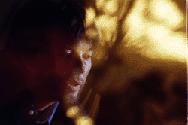Filmaker Ken Burn and all that jazz
 Ken Burns is asking for your attention.
Ken Burns is asking for your attention. For 19 hours.
Which may not be enough time to tell his latest story.
That story is "Jazz," a celebration of America`s one native art form, from its roots among early 19th century slaves to the glories of Louis Armstrong and Duke Ellington, to the tragic legends of Buddy Bolden and Bix Beiderbecke, the swing of Count Basie and Woody Herman, the virtuosity of Art Tatum, Charlie Parker, Johnny Hodges and Miles Davis, the voices of Billie Holiday and Ella Fitzgerald, the far-roaming explorations of John Coltrane.
"Jazz" begins its run Jan. 8 on PBS, 10 episodes spread through the rest of the month. It`s a whole lot of television, in ambition and scope not unlike an Ellington suite, or Benny Goodman`s sprawling 1938 version of "Sing, Sing, Sing."
Ken Burns know that, and he`s not apologizing. After all, the documentary filmmaker responsible for such landmark productions as "The Civil War" and "Baseball" began "Jazz" with 850 hours of film.
"You hope to be able to do everything," he said the other day at the Westgate Hotel in downtown San Diego, "then you whittle back this block of stone to what`s a manageable thing. Already I`m asking a lot of people, and I always have in terms of their attention."
Burns, who was in San Diego as part of a national publicity tour for "Jazz," screened a chapter of his latest magnum opus for the San Diego Cinema Society and sat down for a few interviews.FILM CHARACTER
At 47, he still has the boyish, cherubic face of a teen-ager, and he still sports one of the nation`s few remaining Beatle moptop haircuts.
Burns has made himself America`s designated film historian with a series of blockbuster documentaries that have transfixed the nation, including "The Civil War" in 1990, "Baseball" in 1994, "Lewis & Clark" in 1997, plus a few trifles along the way such as "Brooklyn Bridge" (his first), "The Statue of Liberty," "Empire of the Air," "Frank Lloyd Wright," "Not For Ourselves Alone: The Story of Elizabeth Cady Stanton and Susan B. Anthony" and "Thomas Jefferson."
Right now, he`s fending off complaints by jazz fans, who are a passionate, contentious lot, that too many of their favorite artists are treated too lightly or ignored altogether. Many are also unhappy that Burns spends 17 hours covering the first 60 years of the 20th century (the sixth episode spends two hours on 1937 to 1939), while the last 40 years are wrapped up in the final two hours.
"I take that as a compliment," he said. "If it`s 19 hours long, and people are already saying it`s not long enough, that`s good."
Noting that 40 million Americans watched "The Civil War," and 45 million watched "Baseball," Burns said: "People are willing to sit still. If you`re curious about the way your country ticks, if you thought it was important to know about the Battle of Gettysburg, I`m suggesting I have a subject here that`s equally important to know about.
"On top of that, it`s great music."
The music is, as you might expect, in the marketplace on its own. Music from "Jazz" is available in a sampler CD, a five-CD boxed set, and 22 individual CDs of music by the major artists covered. On top of that comes the elegantly written, gorgeously illustrated companion book, "Jazz," by Burns and Geoffrey C. Ward, plus the home video and DVD packages.
Burns, who confesses he knew nothing about jazz when he began the project, may have done what nobody else has accomplished so far: He`s made jazz an industry.
It was his own curiosity about his country that got Burns started. "I`m interested in how my country works. I`m interested in lifting up the hood and seeing what`s underneath."
During the five and a half years spent preparing "The Civil War," Burns said he "already knew that I was going to follow it with `Baseball.` I had no idea that `Baseball` would take on the scope that it did, but I knew that it was the sequel to `The Civil War.`
"We think of American history as following wars and generals and presidents. But I thought that the game was a way of understanding where we`ve been since ... the Civil War."
As he was editing "Baseball," Burns found himself using jazz on the soundtrack. "So six years ago, I watched `Baseball` along with everybody else. And as I watched it, I realized: `I`m working on a trilogy of American life.` It was a gradual realization.
"`Jazz` was going to be another perspective, and it was going to suggest a kind of - `what we could become.` And it`s been the most challenging and the most satisfying film I`ve made."
Just as "Baseball" served to tell larger stories of race, culture and social structure, Burns sees "Jazz" as another metaphor for American life. In fact, the actual music as often as not serves as background to the memories and reflections of Burns` 75-odd commentators, or to the narration by actor Keith David. Long, uninterrupted musical performances are the exception, not the rule.
While there are "several times when we shut up and play a whole piece, ... " Burns said, "this is not a performance film.
"If I stop, and start playing this music all the time, I`ve got a performance film. That`s not what I do. I`m a historian. I`m interested in jazz because it tells me about my country."
Biography, the stories of people`s lives, form "the basic building blocks of all my films," he said. "And `Jazz` is no different. We`re interested in human beings and their lives. Half my images aren`t about jazz - they`re about American life."
The two lives central to the film are those of Armstrong, the trumpeter and singer who in the 1920s defined jazz as a soloist`s art (and who is now Burns` favorite jazzman), and Ellington, the Promethean bandleader, composer and pianist who continued his dominance and creativity until his death in 1974. Burns called them "the double helix" of "Jazz," "the DNA biographical structure of this film. ... "This is a film about two World Wars. It`s about a Depression, it`s about sex, about the way men and women talk to one another. It`s about race, it`s about drug abuse, it`s about civil rights, it`s about cities, it`s about how men and women dress, it`s about how Times Square looked in every decade of the 20th century, it`s about the food we eat, the cars we drive."
He is not bothered by the criticism that the last 40 years have been summed up too quickly. In fact, he leaps to point out that he covered "the last 25 years in the last 40 minutes.
"I`m a historian. I do not presume to tell the present what it`s about. If I did, I`d have another 50-hour film to work on. And history is about stories that are over with. These stories are still ongoing."
The recent past, he said, is too recent to allow informed judgments to be made, to decide "who among today`s players are as important as Armstrong, Ellington, Charlie Parker, Miles Davis or John Coltrane. We need historical perspective before we can make historical judgments."
Not that the subject matter of jazz itself has changed.
"All of popular music is about sex," said Burns. "But Madonna and Britney are only going to bring you to the bedroom door. If you want to know what to do inside, I`ve got Duke Ellington and Miles Davis to tell you what to do.
"And that`s the only hope of jazz, I think, is that you can remind people that it`s about sex."
(c) Copley News Service
advertisement

Author: Robert P. Laurence
Archives
Van Gogh and Gauguin together again
Harry`s Here
Memoir recalls courtship in Dachau
Mr. Smith goes to Hollywood
Moises Kaufman
And now ... the rest of the story
Finally, a time for Grandma
Homing in on Homer`s distinctly American flair
Gidget is back, and she`s original
Ego tours: rock and roles
Springtime for Brooks
The cradle does rock
Behind their music
Fluid approach to architecture is hallmark of modernist
New American plays mirror transitional theme
More Articles







